The Korean War (1950-1953) was a deeply significant moment in Cold War history. The war raised important military, political and ideological questions for the United States, Britain, the United Nations (UN) and many countries across the world. It was the Cold War at its hottest, a conflict where millions were wounded, killed or displaced. It also profoundly shaped the Korean landscape, the paths of the two Korean states and collective memory, with consequences to the present day.
OUTBREAK
On 25 June 1950, forces of Communist North Korea (the Democratic People’s Republic of Korea) invaded South Korea (the Republic of Korea), by crossing the 38th Parallel which had been the dividing line between the two Koreas since 1945. The UN – a relatively new organisation at this time – condemned the attack and two days’ later its Security Council called on member nations to provide support for South Korea to repel the invasion. The Soviet Union had been boycotting the Security Council since the start of the year over Communist China’s lack of representation, so the measures were passed. The United Nations Command (UNC) was established in July 1950 to coordinate the international military and humanitarian response to the invasion.
In Britain, the Cabinet – led by Prime Minister Clement Attlee, leader of the Labour Party – expressed their dismay at the invasion. They concluded that: ‘It was the clear duty of the United Kingdom Government to do everything in their power… to help the South Koreans to resist this aggression.’ [Source] Elsewhere, British people worried about what the outbreak of war would mean for them and their families, so soon after the end of the Second World War.
Why did war break out?
When war broke out in June 1950 it took many Western countries by surprise, but tensions had been building for many years on the Korean peninsula. Since at least the early twentieth century, Korean representatives had been calling for greater international recognition and sovereignty, but with limited success. From 1910, Korea was occupied by the Japanese empire until its surrender in August 1945. This occupation had a deep and complex impact in Korea, with Koreans serving in Japan’s wartime army, for instance.
In August 1945, Korea was occupied by US forces in the south and Soviet forces in the north, with the two deciding to use a line of latitude – the 38th Parallel North – as the dividing line. Under the supervision of the occupying forces, two politically divergent regimes developed: a Communist state in North Korea under the leadership of Kim Il-Sung (the grandfather of North Korea’s present leader, Kim Jong-Un) and a nominally democratic state in South Korea, led by President Syngman Rhee. However, there was political repression across Korea in this period and growing tensions between the two. Occupying forces withdrew in 1948 but hostilities still increased, culminating in the invasion on 25 June 1950. That day marked a significant turning point and even today in South Korea the war is known as “625” war.
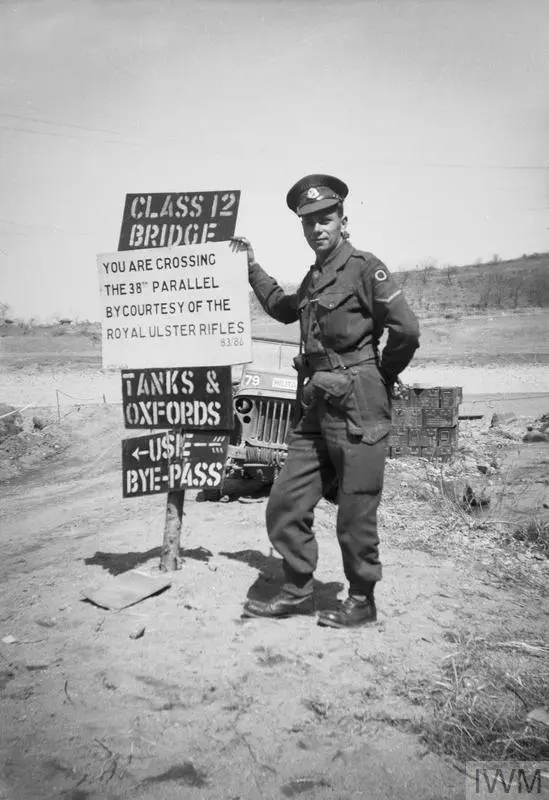
International Response
Over the three years of conflict that followed, twenty-two nations offered armed or humanitarian support to South Korea under the auspices of the UN: these included the United States, Britain, France, Turkey, Australia, Belgium, Thailand and Ethiopia. The United Nations force was led by US General Douglas MacArthur, a veteran of both First and Second World Wars, who was able to reverse North Korea’s considerable initial gains into South Korea. By autumn 1950, his determination to march UN forces further north and to confront Communist China, even potentially using nuclear weaponry, alarmed allies.
Attlee flew to Washington to express his disquiet to US President Harry S. Truman in December 1950. The war was not going well either: China’s entry into the war to support North Korea in October 1950 had pushed back UN advances and its Spring Offensive in 1951 saw UN troops withdraw to an area roughly around the 38th Parallel. After the rapid movements of the first year of the war, the fighting became concentrated in this area, involving patrolling and even trench warfare. MacArthur was recalled by Truman for questioning his administration’s policies in East Asia, replaced by General Matthew Ridgway.
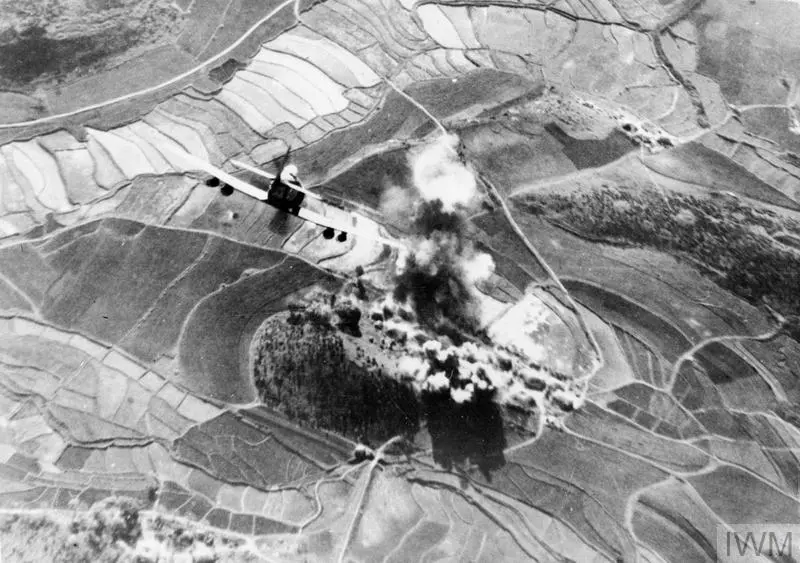
British Involvement
Britain first pledged naval support in July 1950, then troops on the ground, with 27 Brigade (then based in Hong Kong) arriving in Korea in August 1950. After discussions during the first year of the war, British forces became part of the 1st Commonwealth Division, formed in July 1951.
British military personnel were involved in fighting throughout the war, often in very harsh conditions. Among its most well-known battles was the Battle of the Imjin River in April 1951, where the 29th Brigade – famously the 1st Battalion of the Gloucestershire Regiment – attempted to halt advancing Chinese forces. There were heavy casualties and many servicemen were taken prisoner, including the Commanding Officer of the Gloucestershire Regiment, Lt. Col James Carne, later awarded the Victoria Cross for gallantry.
In Britain itself, the war’s outbreak was initially greeted with dismay, as well as concern about whether war might once again influence ordinary people’s lives. There was some confusion too for, whilst Britain had strong links to other parts of East Asia through its empire, little was known generally about Korea. The war also raised political issues, especially about the costs of rearmament as Attlee’s government (like other European post-war governments) had been elected in 1945 on a promise of a more comprehensive welfare state. Yet despite moments of concern and the involvement of many thousands of service personnel – including young conscripts – the war gradually faded from view in Britain, even while the fighting continued.
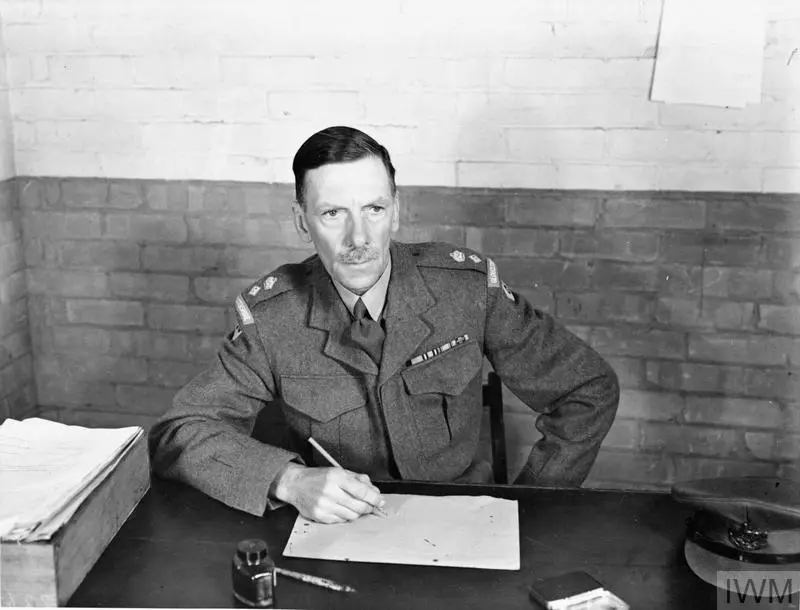
Korea and the Cold War
For Cold War historians, the Korean War reveals many important dynamics and players in the early Cold War period: deepening western alliances, the role of international organisations, the Sino-Soviet alliance (in 1950 Stalin supported the North Korean invasion), ideological clashes, the intertwined process of decolonisation and the idea of ‘containment’.
The treatment and fate of prisoners of war also held particular significance during the Korean War. The conditions of thousands of captive Koreans – held in camps in South Korea but also in domestic prisons earlier in the war – raised international concern. So too did the North Korean and (from 1951) the Chinese treatment of UN captured personnel, many of whom were held in camps in the far north of the country. Some later described malnutrition, use of solitary confinement and shortage of basic supplies, as well as little access to international humanitarian aid. Others too described political indoctrination classes, the use of public ‘confessions’ and even forced autobiographical writing, all aiming to turn POWs against ‘Western imperialism’.
litical re-education’ led to allegations of ‘brainwashing’, a term that was itself born during the Korean War when journalist Edward Hunter used it in 1950. Brainwashing described the apparently inexplicable change of heart that captives could undergo due to external manipulation. Whilst psychologists and other scientists questioned its validity, brainwashing became one of the most enduring cultural legacies of the Korean War and was a major element in many dramatic representations of the Cold War – from The Manchurian Candidate (1962) to The Ipcress File (1965).
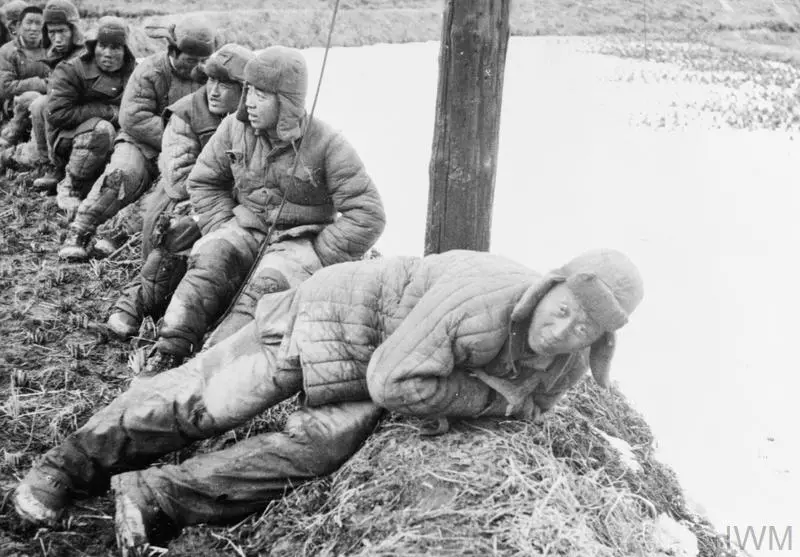
Concerns grew with later revelations that some of those held in captivity had in fact been ‘turned’, such as British intelligence officer George Blake. Blake was working in Korea shortly before the war and, after Seoul was captured for the first time by North Korean forces, he and other British Embassy staff were taken captive. During his captivity he offered to pass material to the KGB on his return to the UK, which he did, including information about the Berlin Spy Tunnel. Blake was unmasked as a double agent and arrested in April 1961, but staged a dramatic escape from Wormwood Scrubs prison in 1966. His case led to a much stricter vetting procedure for public servants, especially those who had been held in ‘Communist hands’. Blake lived in Moscow until his death in 2020.
Where prisoners would go when fighting stopped was also a point of contention. Communist China called for the immediate repatriation of allprisoners of war (a stipulation of the Geneva Convention), whereas US resisted, arguing that many North Korean and Chinese captured personnel had been forced to fight and would face persecution if they returned, especially those who professed anti-Communist views.
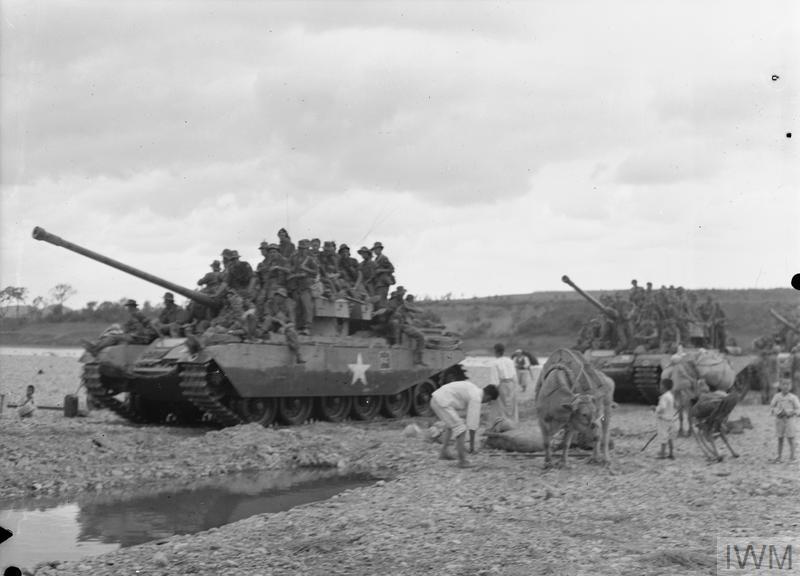
An Uneasy End
Negotiations, especially about prisoners, rumbled on into 1953. By July, it was decided that a neutral authority would temporarily supervise non-repatriated prisoners who did not wish to return. The Korean Armistice Agreement was signed at Panmunjom on 27 July 1953, leading to the cessation of hostilities. From early August the repatriation of all prisoners began. However, as no treaty was signed, it is often pointed out that the Korean War technically never ended. Its legacies certainly live on in the divided peninsula to the present day.
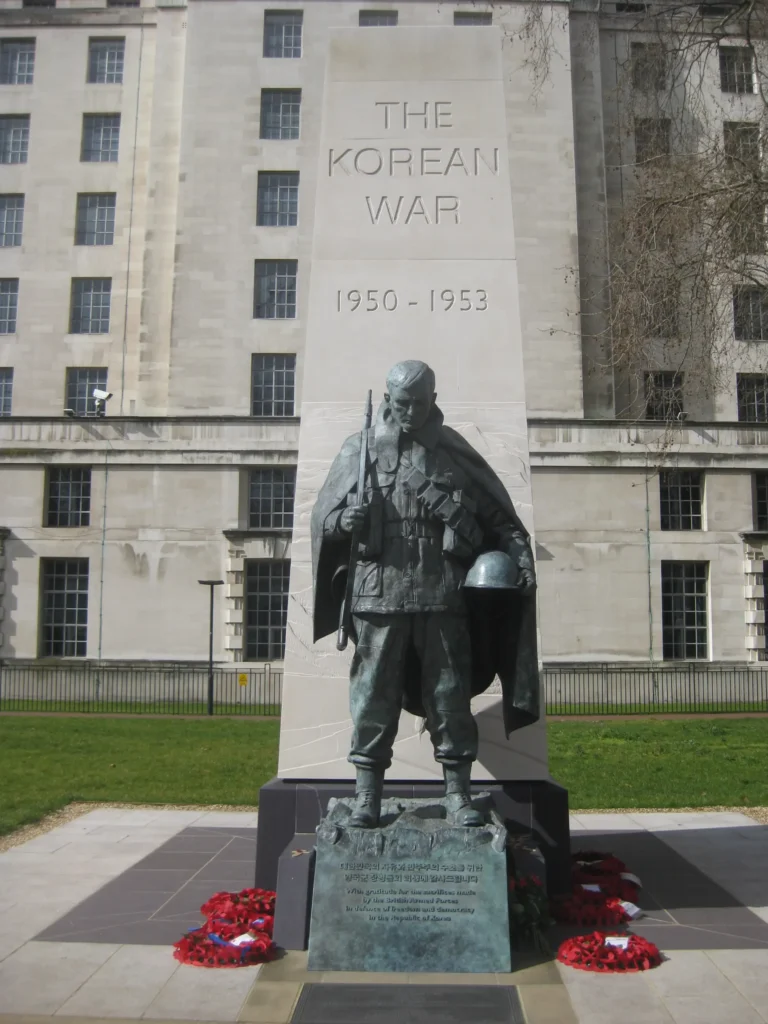
Remembering the Korean War
In some ways, the uncertain end of the Korean War contributed to its reputation as a ‘forgotten war’. The continuing dominance of the Second World War in the collective memory of many combatant nations also meant that the Korean War was overshadowed. Service personnel returning from Korea to post-war Britain felt that people back home did not want to know about their experiences, as they wanted to get on with the task of reconstruction after the Second World War. Veterans noted how there were few novels or films about Korea, with the exception of A Hill in Korea (1956)– Michael Caine’s debut film, fresh back from national service in Korea himself.
However, more recently there has been greater interest and public remembrance of the Korean War in Britain: in 2014 a new memorial opened on Victoria Embankment in London – outside the Ministry of Defence – to commemorate over 1000 British service personnel who died in the conflict. Television and drama reference the conflict more too. The continued international concern over North Korea’s nuclear weapons capability but also the wider interest in Korean culture that accompanied the Korean Wave (hallyu) have begun to raise British awareness of its own past involvement in the peninsula. Its small remaining number of veterans have played an active part in maintaining links too, through ‘revisit’ programmes and other links with South Korea. And the conflict’s popular memory will no doubt continue to evolve.
Dr. Grace Huxford is a Senior Lecturer in Modern History at the Department of History at the University of Bristol in the UK. She is a member of the Allied Museum’s international scholarly advisory board and the author of the book The Korean War in Britain (Manchester University Press, 2018).
Further Reading
Grace Huxford, The Korean War in Britain (Manchester: Manchester University Press, 2018)
S.P. Mackenzie, British Prisoners of the Korean War (Oxford: Oxford University Press, 2012).
Robert Barnes, The US, the UN and the Korean War: Communism in the Far East and the American Struggle for World Hegemony (London: IB Tauris, 2014).
Monica Kim, The Interrogation Rooms of the Korean War: the Untold History (Princeton University Press, 2019).
Hajimu Masuda, Cold War Crucible: the Korean Conflict and the Postwar World (Harvard University Press, 2015).
Andrew Salmon, Scorched Earth, Black Snow: Britain and Australia in the Korean War, 1950 (Aurum Press, London, 2011).
